Honolulu
By Rev. Blayne Higa
In the green oasis of the Foster Botanical Garden, tucked away at the edge of downtown Honolulu, stands a large bo tree. Not only does this stately tree offer a welcome respite from the bustle of the city, it’s a reminder of how the seeds of the dharma were planted and cultivated in Hawaii.
The Foster Botanical Garden bo tree is descended from the tree in India under which Shakyamuni Buddha attained enlightenment. Given to Native Hawaiian philanthropist Mary Robinson Foster by Anagarika Dharmapala in 1913, it’s a living memorial to their lifelong spiritual friendship and incredible work nurturing Buddhism in Sri Lanka and India, including restoring the sacred Mahabodhi Temple in Bodhgaya.
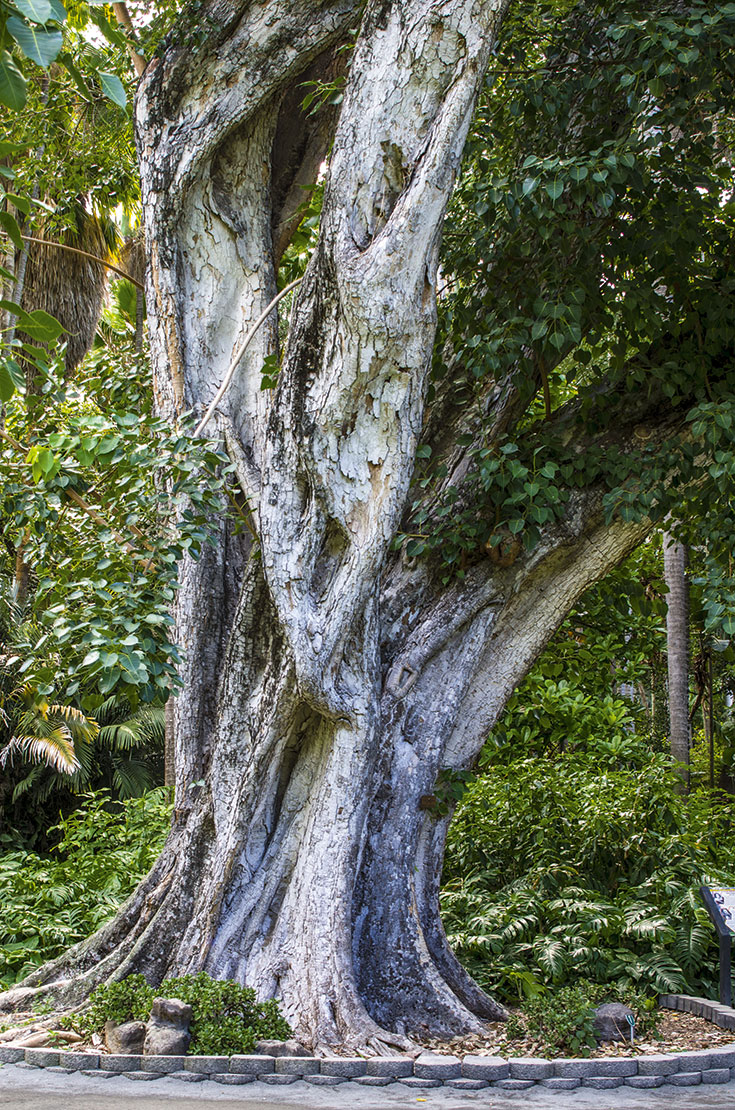
A benefactor of Buddhist communities in Hawaii, Foster was instrumental in the building of the first Buddhist temple in Honolulu in 1900. She also donated the land that in 1918 would become the Honpa Hongwanji Hawaii Betsuin. Collaborating with Bishop Yemyo Imamura of the Jodo Shinshu school, they designed this temple to embody the hybrid nature of American Buddhism. The stunning white structure is situated in Honolulu on the slopes of the extinct volcanic cone Puowaina (Punchbowl) and features distinctive architectural elements representing Buddhism’s Indian origin. While there is a traditional Japanese Shin Buddhist altar, there are also pews, an organ, and a pulpit, representing Buddhism’s adaptation to its American home.
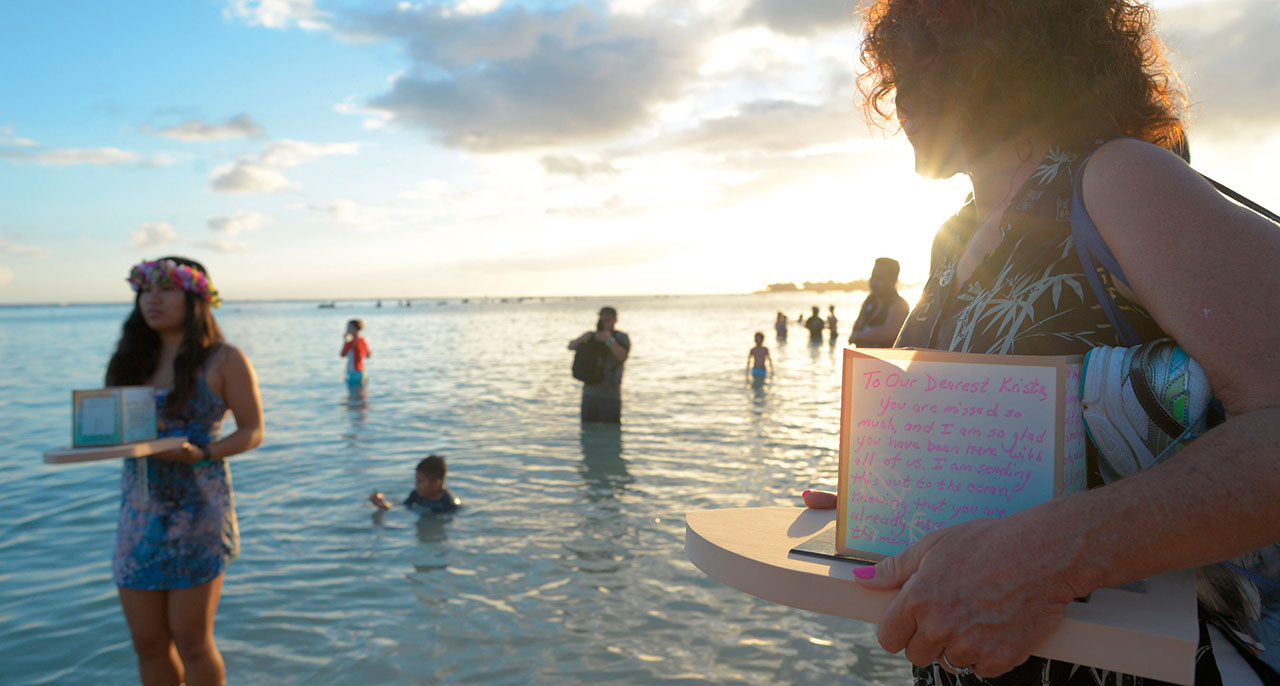
Shinnyo-en is a school of esoteric (Vajrayana) Buddhism that originated in Japan. Shinnyo-en Hawaii, established in Honolulu in 1971, is now famous for its annual lantern floating festival held on Memorial Day. Lantern Floating Hawaii is an opportunity to celebrate the cherished memories of loved ones and to offer a wish for peace. Each year thousands of lanterns gently float in the waters off Ala Moana Beach, casting a warm glow in the tropical twilight. It’s a solemn yet joyful ceremony.
On the Big Island of Hawaii, in the fertile coffee growing region of Kona, the airport is named for Astronaut Ellison Onizuka, the first Shin Buddhist in space. Making your way down the scenic Mamalahoa Highway, with rolling green mountains on your left and the calm azure waters of the Pacific Ocean on your right, you pass the Kona Daifukuji Soto Mission and the Kona Hongwanji Buddhist Temple. Established in 1914 and 1897 respectively, these temples were founded by Japanese immigrants who came to Kona to farm coffee. Enshrined at Kona Daifukuji is a beautiful statue of the bodhisattva of compassion known as “Hawaii Kannon.” At Kona Hongwanji, there is a serene image of Amida Buddha carved from a piece of sandalwood, which was harvested from the rainforest above the town of Kealakekua in 1932.
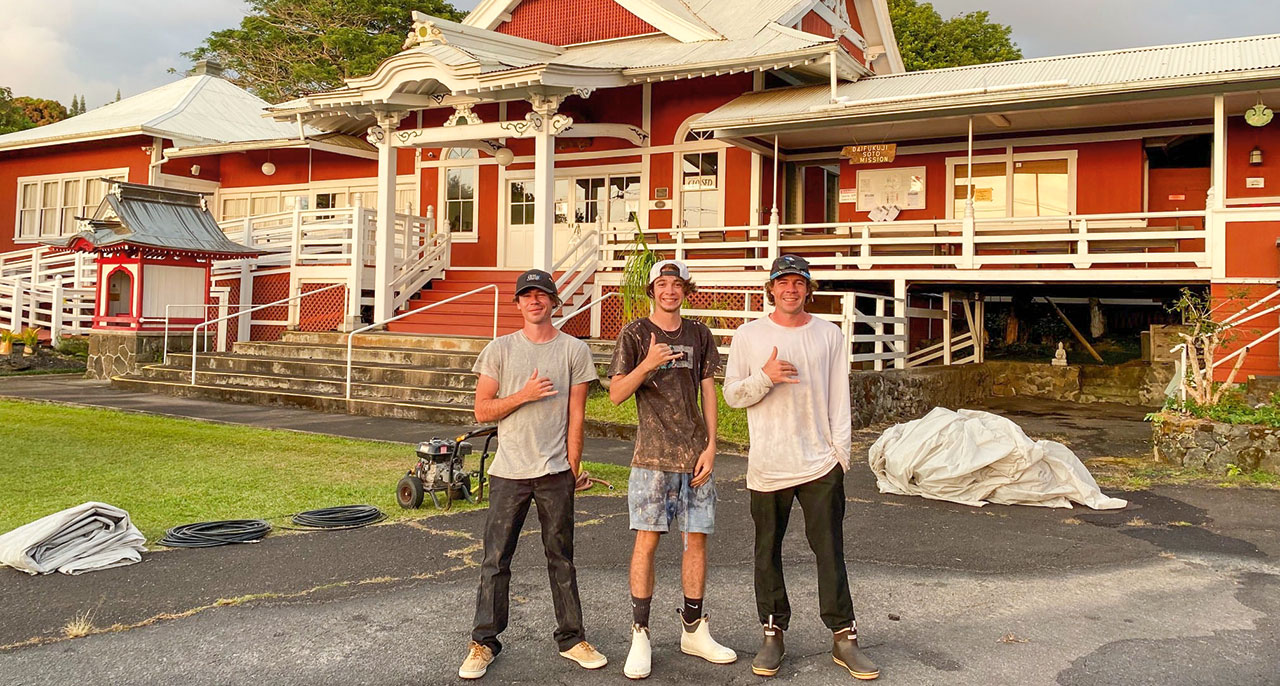
About a half-hour drive from the Kona International Airport, take a narrow, winding road to a five-acre organic farm, Gingerhill Farm Retreat. In addition to growing a variety of fruits, vegetables, and medicinal herbs, Gingerhill is a dynamic dharma center where people learn to take care of their bodies and minds by caring for the land. Guests not only work on the farm, they practice yoga and Zen meditation daily. The renowned Buddhist artist and activist Mayumi Oda lives at Gingerhill, and it’s where she creates her powerful artwork celebrating the feminine divine. It’s truly a place of healing, creativity, and learning.
From urban centers to the rural backroads, Buddhism has flourished in Hawaii since the late 1800s, becoming part of the rich cultural and spiritual fabric of the Aloha State. These are just a few of the amazing Buddhist sites you can see when you visit the islands.
New York
By Melvin McLeod
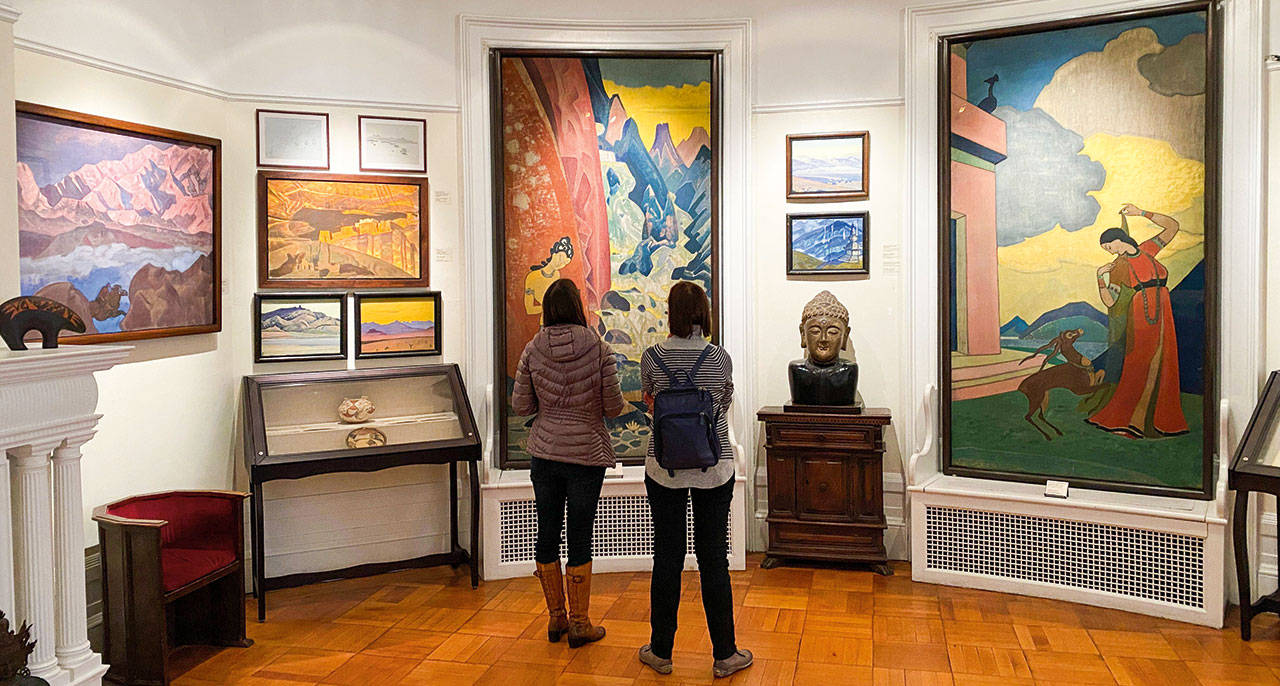
I’m not a New Yorker, but I love New York, always have. In recent decades my visits there have revolved around my work as editor-in-chief of Lion’s Roar. So combining my enthusiasms for New York and Buddhism, I’m happy to offer you a one-day tour of Buddhist New York.
Our notional visit starts up in Morningside Heights, with a walk around the iconic campus of Columbia University. Here, D. T. Suzuki electrified a generation of 1950s avant-garde thinkers and artists with his lectures on Zen. In the stacks of Columbia’s famed library, Thich Nhat Hanh had a deep experience of emptiness he described in his journal. And as Je Tsongkhapa Professor of Indo-Tibetan Buddhist Studies, Robert Thurman pioneered the field of buddhology and made it okay to be an academic who is also a practicing Buddhist.
Leaving campus, we walk over to Riverside Drive to the New York Buddhist Church, founded in 1938 as a temple of the Jodo Shinshu Pure Land school. In front of the temple, contemplate a bronze statue of Shinran, the founder of Shin Buddhism, that survived the atomic bombing of Hiroshima.
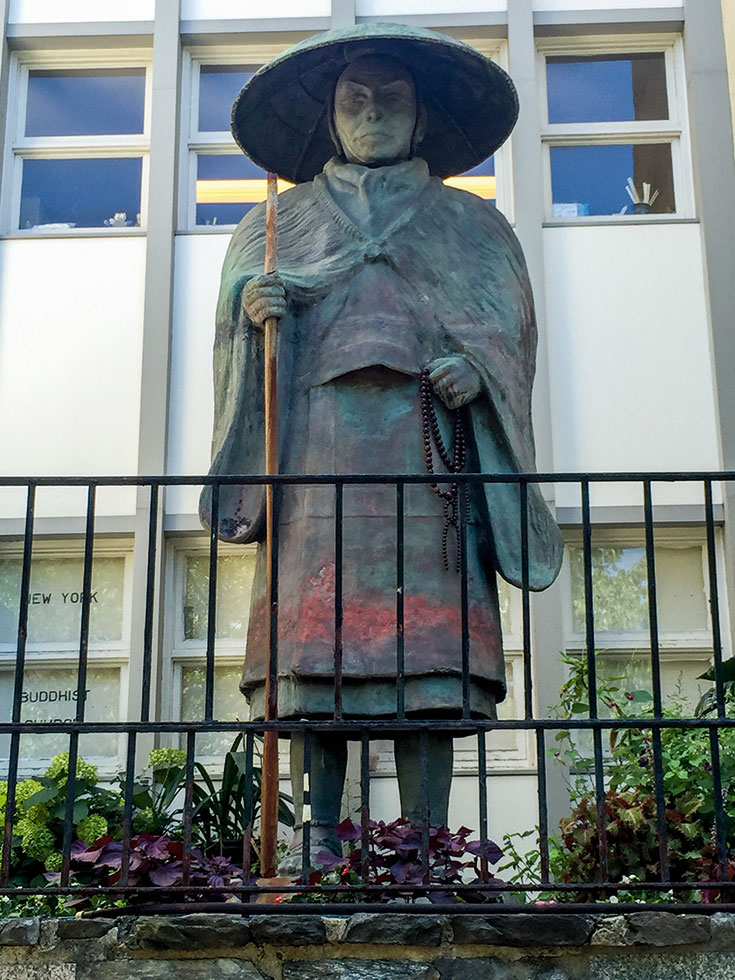
A couple of blocks away is the Nicholas Roerich Museum, dedicated to work of the Russian artist, traveler, and thinker. Here you can see an extensive collection of Roerich’s paintings of Tibet and other mystical subjects. Touching in their naivete, they’re interesting examples of European fascination with and romanticization of Eastern religion.
Now hop on the West Side subway and enjoy a walk across Central Park to the Metropolitan Museum of Art, where you can tour one of the world’s finest collections of Buddhist art. Don’t miss the luohans, among the greatest examples of Buddhist art in the world. There are sixteen of these life-like Chinese statues of arhats in existence, and two of them are in the Metropolitan.
Pause and contemplate the living spirit of meditation and enlightenment right in front of you.
Now head down to Chelsea to the Rubin Museum of Art, one of the few museums in the world completely dedicated to the art, culture, and religions of the Himalayas. The permanent collection offers an outstanding overview of Himalayan art, and the temporary exhibits, annual themes, and lecture series are always first-rate (as is the café).
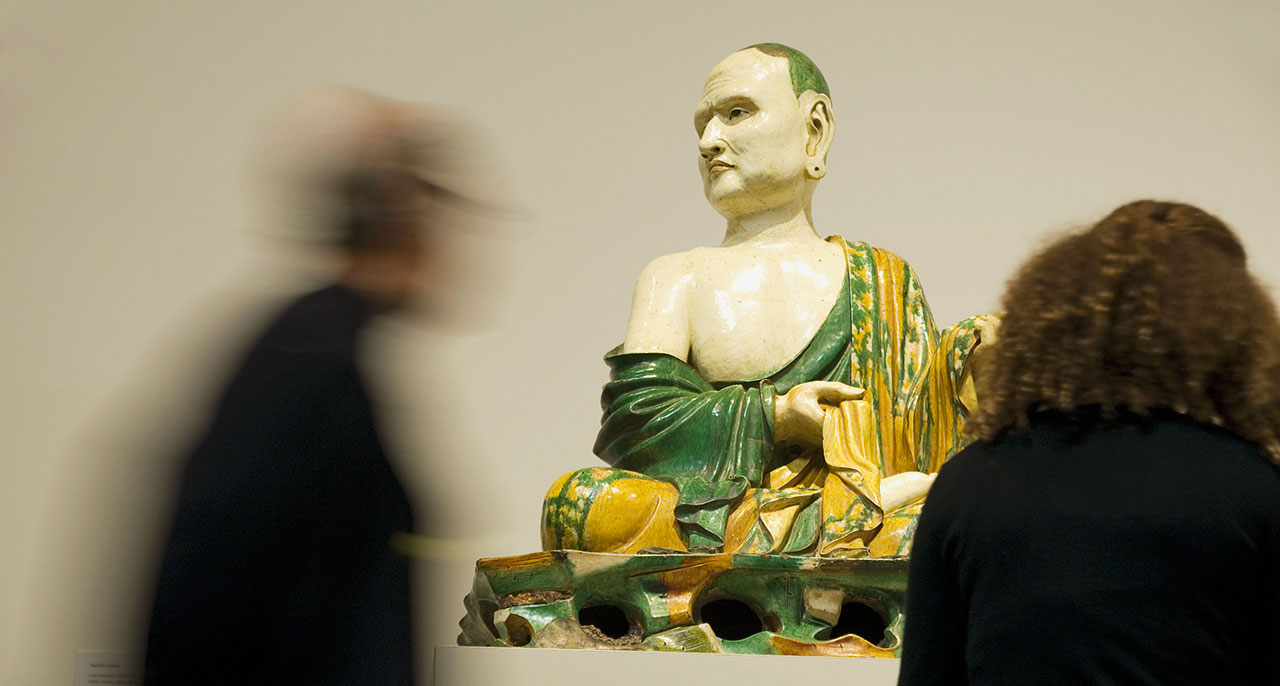
Not far away in Chelsea is Tibet House, founded by Robert Thurman and Richard Gere at the Dalai Lama’s request to showcase and preserve Tibetan culture. After you enjoy their gallery and bookstore, take the opportunity to thank the dedicated staff for their work on behalf of Tibet.
Now head across town, perhaps through Washington Square Park, to the East Village, where avant-garde poetry, theatre, and music met Buddhism and sparks flew. Buddhist poets Allen Ginsberg, Diane di Prima, and Anne Waldman read at the Poetry Project at St. Mark’s Church; Patti Smith played at CBGB; and Ginsberg, Philip Glass, William Burroughs, and other Buddhist and Buddhist-adjacent cultural figures lived in the neighborhood. The East Village is a lot more gentrified now, but you can still feel that counterculture spirit.
Keep heading downtown to Soho and drop in at the Village Zendo if they’re open. There you will meet a lively, artsy, and diverse mix of Zen practitioners led by Roshi Pat Enkyo O’Hara, one of the leading lights of American Zen. Their new location in the American Thread Building has great karma: it used to be the late Gehlek Rinpoche’s New York center, where students like Ginsberg and Glass heard dharma talks by this outstanding Tibetan teacher.
Finally, head down to Chinatown and notice the many temples in storefronts or commercial buildings that serve Chinese and other East Asian Buddhists in their own languages. You get a glimpse of the vibrant Asian American Buddhist population of New York—it numbers in the millions. And if you happen to be in the city on Buddha Day, join the Vesak celebration put on by the New York Buddhist Council that brings together all the Buddhist communities of the five boroughs.
Bonus: If you have time, hop on the L Train to Brooklyn, where you can visit or sit zazen at the Fire Lotus Temple, the NYC center of the Mountains and Rivers Order founded by the late John Daido Loori Roshi. If my friend Geoffrey Shugen Arnold is there, say hello and ask him for a few words of Zen. Then you can head back to Manhattan after a long but I hope rich day in Buddhist New York.
The Bay Area
By Jeff Greenwald
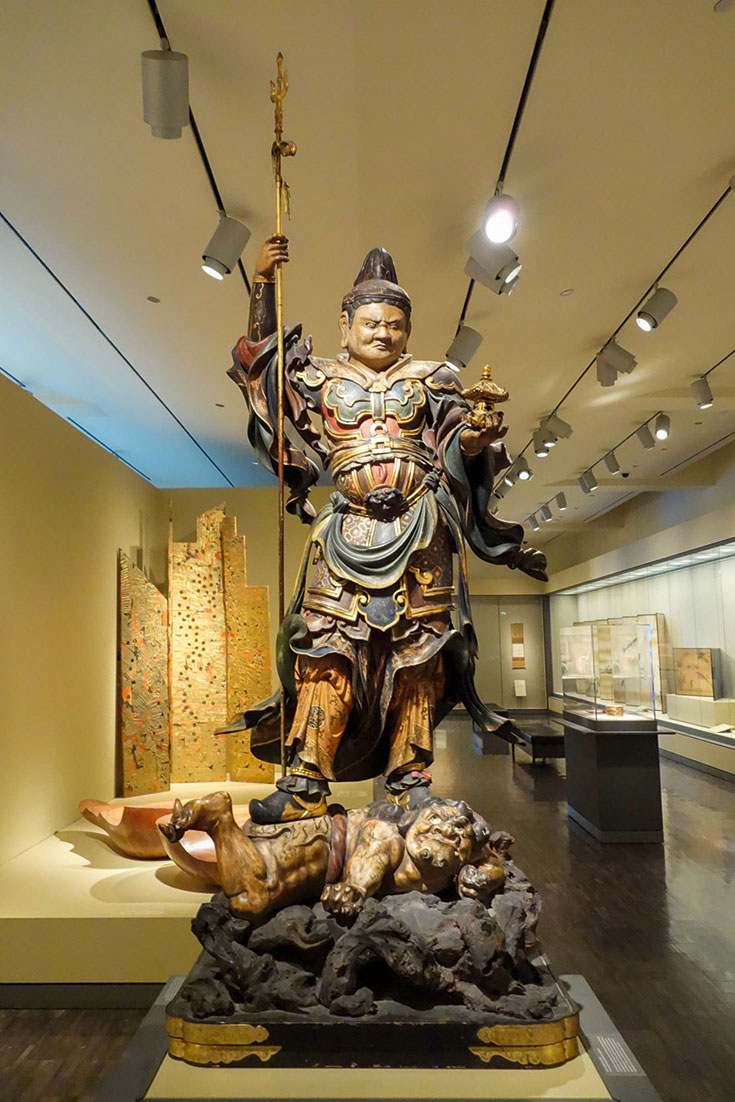
Had Siddhartha Gautama visited the San Francisco Bay Area during his lifetime, he might have seen it as a pure land. The rolling hills then bristled with redwoods, crystalline streams fed to the sea, and animals roamed the coast and inland valleys. Two and a half millennia later, the Bay Area is a rich pilgrimage destination for his followers, home to a full range of vibrant Buddhist communities.
The history of dharma study in the San Francisco area began in 1899, when two Shin Buddhist teachers came from Japan to provide spiritual guidance to Japanese immigrants. In time, the community developed into the Buddhist Churches of America. Located in San Francisco’s Japantown, the local branch of the BCA (which also houses the BCA’s national headquarters) offers beginning and advanced instruction in Buddhism and meditation, for children as well as adults.
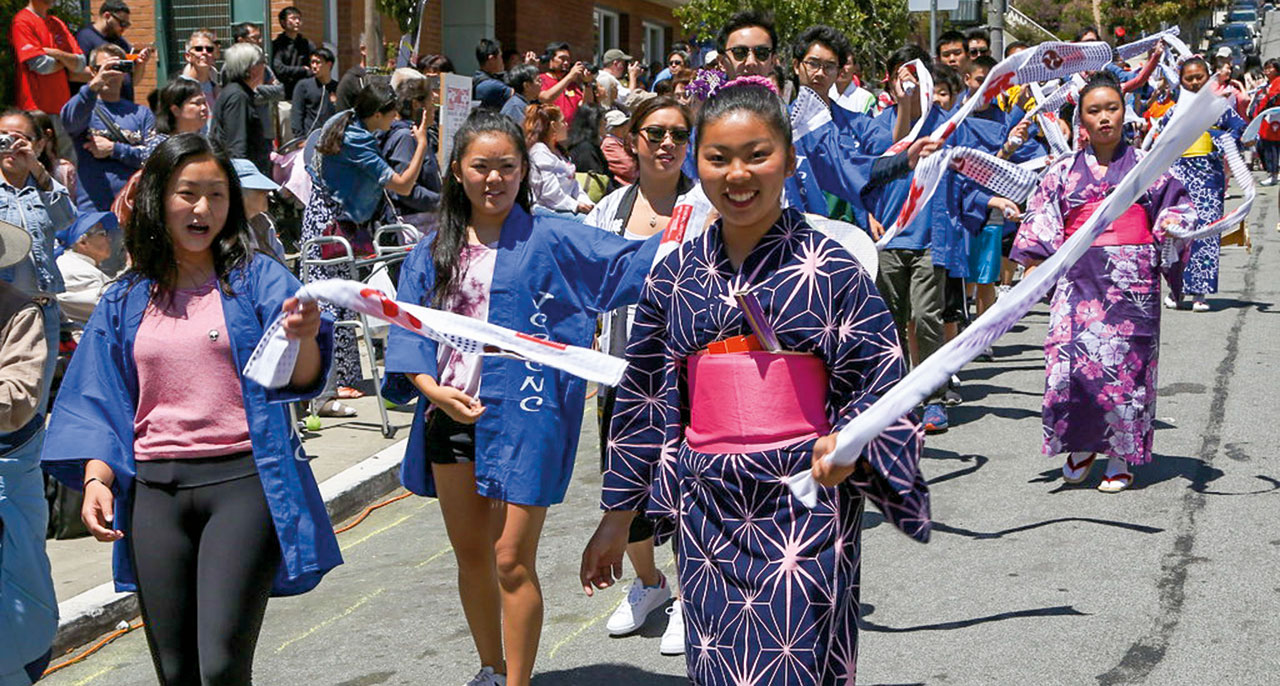
Established by the late Shunryu Suzuki Roshi, author of Zen Mind, Beginner’s Mind, San Francisco Zen Center has been at the heart of the Bay Area Buddhist community since 1962. It supports three related locations. City Center, in central San Francisco, features daily meditation, individual guidance with experienced teachers, and frequent dharma talks. Set amidst the coastal hills of Marin, Green Gulch Farm offers apprenticeships for working guests, as does Tassajara Zen Mountain Center. Located east of Big Sur in California’s Ventana Wilderness, Tassajara hosts long-term retreats and short-term visitors in the summer.
In the 1950s and early 1960s, Beat writers such as Jack Kerouac, Diane di Prima, Gary Snyder, and Allen Ginsberg embraced Buddhist teachings, and poet Lawrence Ferlinghetti’s City Lights Bookstore quickly became the literary hub of the S.F. dharma scene. Still in its original North Beach location, the store has retained its Beat ambiance and continues to serve as a resource and meeting place for the literary community.
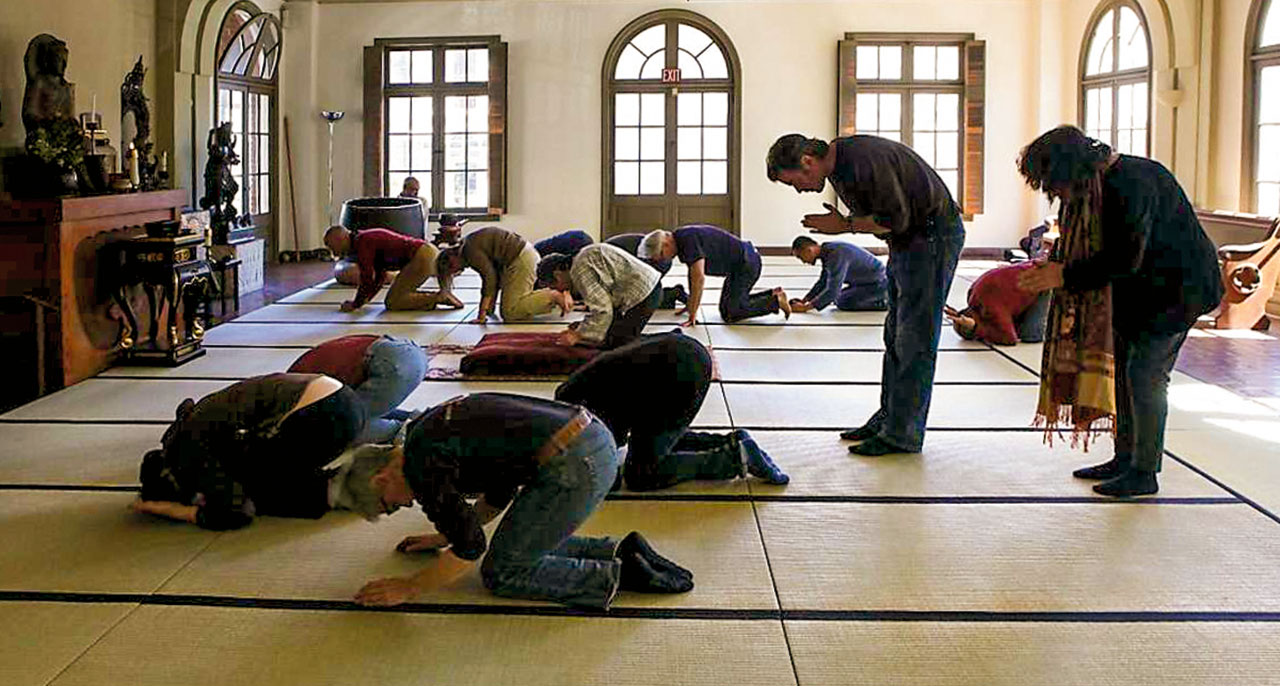
Located in Berkeley, the Nyingma Institute founded by the Tibetan teacher Tarthang Tulku offers classes and workshops that, they explain, require “no belief system or commitment to Buddhism.” Programs range from beginning meditation classes, to guidance in chanting traditional Tibetan prayers, to learning the Tibetan language. Instruction in Kum Nye—a form of Tibetan yoga integrating all the body’s senses and energy centers—is also available.
The lively, blossoming Uptown district of Oakland is home to East Bay Meditation Center. Drawing on a variety of spiritual traditions, with a focus on Insight Meditation, EBMC serves Oakland’s diverse population by focusing on “radical inclusivity,” cultivating an atmosphere uniquely welcoming to people of color, individuals with disabilities, and members of the LGBTQI community. Along with meditation practice and introductory Buddhist teachings, EBMC offers classes on community healing, tai chi, yoga, social justice, and mindful parenting.
Located on an unassuming street in Berkeley, Wat Mongkolratanaram has long served as a gathering place for the Thai Buddhist community. This elegant wat (temple) is justly famous for its Sunday “Buddhist brunch.” With proceeds benefitting the sangha, this outdoor market offers a wonderful variety of Thai cuisine and attracts scores of students from nearby U.C. Berkeley and beyond. The temple is also a center for Thai language and music studies, with weekly presentations (mainly in Thai) given by resident monks.
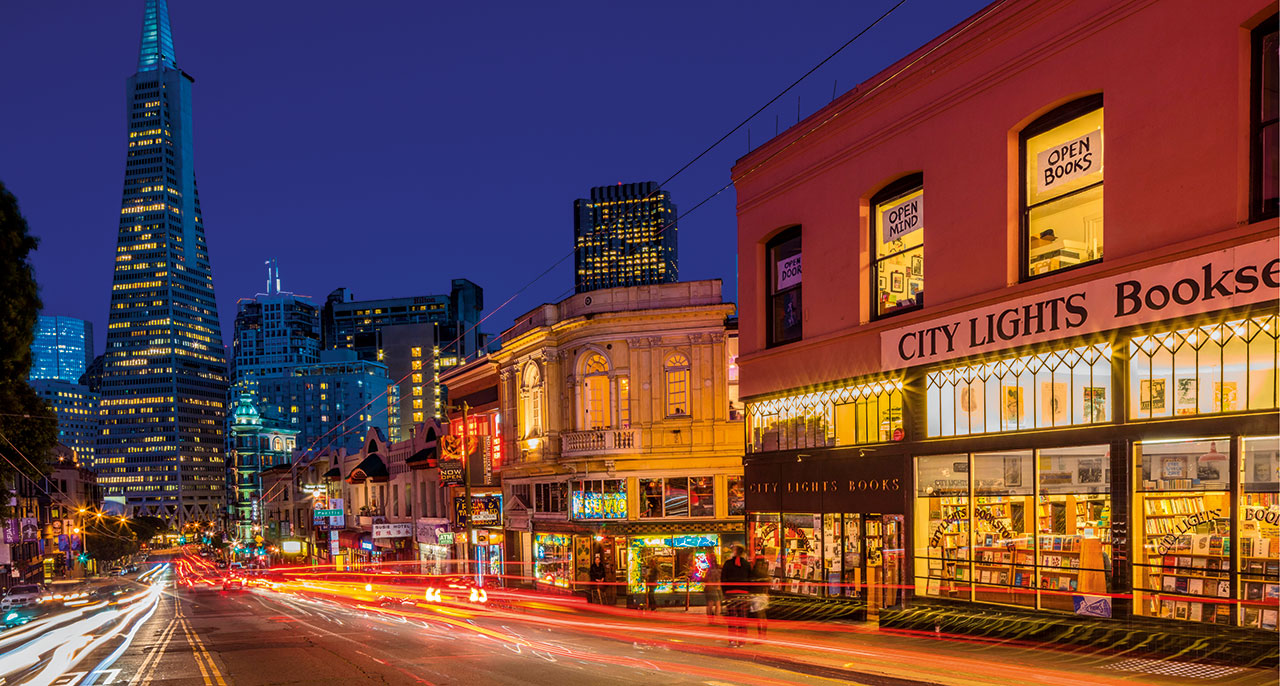
Siddhartha Gautama is said to have asked that his image never be idolized, and for centuries his presence was symbolized simply by a lotus flower or his footprints. The first crude likenesses of Buddha appeared more than half a millennium after his death, on early coins of the Kushan Empire. But the floodgates were opened. Walking through the beautifully presented displays of San Francisco’s Asian Art Museum—located just steps from City Hall—one can trace the global explosion of Buddhist art as it swept through Asia.
About an hour’s drive past the Golden Gate Bridge is Spirit Rock Insight Meditation Center, one of the most active Buddhist teaching communities in the Western world. With an emphasis on mindfulness and compassion, the retreat center—located on 411 acres of rolling hills and oak woodlands in Marin county—offers scores of programs, from open-to-the-public dharma talks to ten-day silent retreats.
